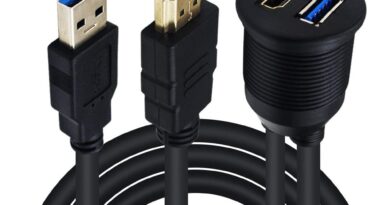What Will Be The Best Practise For Store Visits And Retail Audits In 2023?
Retail audits give merchants the chance to monitor the health of their companies and understand how they’re doing. However, the administrative time and effort required to organise, carry out, and follow up on audits can entail weeks of consistent work.
The store audit is an essential part of retail operations, according to StorIQ, a provider of cloud-based retail solutions. Store experience has become more crucial than ever as businesses deploy omnichannel shopping strategies and click-and-collect matures. And it’s up to field employees to provide an excellent client experience.
Regular store inspections and audits are always essential to running a successful business, and they don’t have to take a lot of time or effort. This post will offer suggestions on how to maximise the effectiveness and impact of your audits with the help of an audit app.
What Are A Retail Audit’s Goals Are?

So why are store inspections and retail audits necessary in the first place?
By ensuring that every store functions in accordance with internal standards and provides the best experience for both customers and employees, audits safeguard the reputation of the brand. The Head Office can assess a store’s performance through store visits. In turn, this makes it possible for management to revise their retail strategy and make better decisions.
Typically, audits are concentrated on a single aspect of retailing, such as;
- Visits by Mystery Shoppers
Gather information about how customers engage with and assess the brand, as well as about how they generally feel about the establishment.
- Audits of Marketing and Merchandise
Make sure the store is tidy and well-kept, the merchandise is displayed according to rules, and the promotional signage is accurate. Launch fresh promos, swiftly gather feedback from the field, and make adjustments as necessary.
- Audits of Loss Prevention
In order to reduce theft, waste, and security breaches, make sure that policies and procedures are being followed.
- Inspections for Health and Safety and Food Safety
To protect workers and the general public, verify adherence to health and safety policies and regulations.
- Surprise Visits and Competitor Audits
Recognize the strategies used by your rivals to position themselves in the market, the best practises, and the implications for your company.
Advantages of Routine Store Inspections and Retail Audits

Why do brands regularly audit their stores and inspect them? Among the advantages are;
- Protecting Your Brand and Spotting Issues Early On
Ensure adherence to brand standards and guidelines so that customers consistently have the desired brand experience, no matter which store they visit. Additionally, store visits enable management to identify problems before customers do, such as needed maintenance work, training shortages, process faults, etc.
- Evaluating the Efficiency of Planograms and Merchandising
View it from the customer’s standpoint: Analyze whether the layout of your store encourages customers to purchase things from the shelves and is user-friendly. Audits look for adherence to manufacturer and supplier contracts by stores.
- Data-Driven Judgements
Retail companies that regularly audit their stores can use the most recent shop data to improve decisions and performance. Exist persistent problems in one or several stores? What training topics should be given top priority? Which brand-new equipment should I buy?
- Team Management and Store Teams Together
Retail audits enable a two-way flow of information between the teams in the corporate office and the stores. Store visit reports provide feedback to the store teams. They can recognize both their successes and their areas for progress thanks to measurable scores.
- Safety and Health
Audits verify the observance of legal requirements such health and safety regulations and standards. These measures protect the health and safety of customers, staff members, and the reputation of the company as a whole.
Time-Saving Retail Audits through Digitization

In order to effectively empower management teams, many firms still perform audits using largely manual methods and don’t optimise their data collecting on the ground.
The most frequently used tools are still paper forms, Excel spreadsheets, and shared documents. This makes auditing a laborious process because forms could be misplaced, reports are manually created by auditors, and identifying trends necessitates finding previous audits, gathering data, and sharing it with management. Due to resource limitations, audits are not carried out very frequently.
The option to seamlessly connect store audit data with other performance and sales data is not available to head office. It becomes impossible to identify problems immediately and react swiftly. Overall, this results in Management having a skewed, erroneous, or incomplete image of retail operations.
The improvement of retail operations can be made possible through digitising store visits and retail auditing.
Select the Appropriate Retail Audit App or Programme

Retail audits can be carried out effectively and efficiently using an app store reports on a smartphone or tablet. While at the store, auditors can take in-depth notes and images, and with a few simple clicks, they can send a full digital report to headquarters.
- Make Your Store Audit Checklists Uniform.
Create standard inspection template forms using the selected auditing instrument. Use intelligent tools to direct the user, such as required questions or photographs, If-Then logic to gather more data based on the responses, standardized and color-coded scores, etc. Make your audit report forms simple to scan while still allowing auditors to add more information as needed.
- Checklists as a Training Tool
By including instructions or photographs of guidelines with each audit topic or question, you can give the auditors and shop managers additional knowledge and direction. Such enhanced digital checklists, for instance, can be utilised to effectively roll out new promotions.
- Utilize The Information Right Away
You should be able to access all audit data using the tool you select, and it should be easy to analyse the data over time, across several stores or regions, per topic, etc. The programme should also integrate with your other data analysis tools.
- Updating the Appropriate Parties
The auditing app needs to include workflow features so the auditor can make action plans, monitor progress, and send regular reports to management and other stakeholders.
Conclusion
You should put any corrections or modifications into place as quickly as possible after each audit, then conduct another audit of your store to determine how things are going. Regular store audits are another excellent way to monitor your company’s development, so be sure to review the results at the end of each quarter and each year.
Be sure to correlate audit results with inventory inspections, sales over time, and resource allocations to gain a wider picture of your retail business since audit checklists are just one piece of data you may use to track long-term development. If you are looking for an app for auditing report, get in touch with UrAudits.



